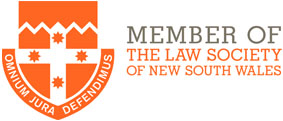Running a business is risky and small businesses can be especially so. Minimizing risk in your business is crucial.
Often, SME owners put their own personal assets on the line, whether to borrow funds from a lender to start up or buy stock or equipment or by signing a guarantee in relation to suppliers and others for the debts of the business.
There are several methods of protecting personal assets from creditors, but it is a process that many don’t follow. Some are quite simple and easy to put in place. They include…
Placing assets in a spouses’ name or in a family trust
In most circumstances, creditors will not be able to make a claim upon assets owned by your spouse or held by a discretionary trust, provided that you are not the trustee. If your spouse is the trustee, then he or she is the person who will usually decide how to divide up the income or capital of a trust (or not to).
Of course, stamp duty and capital gains tax issues must also be considered before acquiring or transferring assets as well as the potential operation of claw back provisions. The loss of the principal place of residence CGT exemption or the land tax issues may be a factor weighing against doing this.
In the end, it is weighing up risk vs benefits and making an informed decision regarding any asset protection measures.
Encumbering assets if you cannot transfer them
An asset that is mortgaged to its value is not attractive to a creditor. The mortgagee in such a case is the only entity that will benefit from the subsequent sale of the asset.
A guarantee form a person without assets is effectively valueless. Often businesses don’t check to see what a guarantor actually owns.
If you seek a guarantee from a director of another business, you could make some inquiries about their credit/financial position before creating an account,
Correctly structuring your business
Sometimes it is not feasible to establish an asset-holding entity and a trading entity (as many small business start-ups are strapped for cash) but it can be a great way to protect the business assets from day to day trading risks. Even getting the type of business structure right from the beginning (sole trader, partnership, company, trust or combination etc) can have a massive impact on your business.
It is possible to establish a company with a single director and/or single shareholder. The company dealing with third parties, supplies, customers and the like is the entity that may be liable to them, not the shareholders.
The shareholders are only liable to the company for the unpaid amounts (if any) on any issued share capital. This liability is usually a nominal amount such as a dollar. Shareholders have no liability to third parties unless they agree to it, such as by giving a guarantee.
Company directors may have some liability but only in limited circumstances can the corporate veil be lifted. Courts may be prepared to lift the veil in limited circumstances, such as in the case of insolvent trading, fraud or misrepresentation, inappropriate transactions or where public policy requires it.
Charging assets (and properly recording the charge)
Before lending money to your business, a charge should be created in the correct form and that form recorded as against assets such as real property (by way of mortgage recorded at Land and Property Information or another State’s land titles registry) or against non-real estate assets (by way of a Specific or General Security Deed and making a registration on the Personal Property Securities Register (PPSR)) to secure repayment of that money in preference to other creditors should the business fail.
Having proper terms of trade
Most businesses, if they have them at all, have terribly inadequate terms and conditions of trade. Often they are just copied and pasted from other documents and not tailored, leaving businesses thinking they are adequately protected when they really are not covered at all.
T&Cs should be built to protect your particular business and should be a work in progress, tweaked to solve or prevent problems that have arisen in your business from occurring again,
Avoiding personal guarantees altogether
A guarantee is a contract by which a guarantor promises that another person or entity will comply with his, her or its obligations to a third party and if they don’t, the guarantor will. The most common example involves bank loans where a guarantor such as a parent promises to repay the loan of their child if the child defaults.
Becoming a guarantor can be extremely risky, particularly when large liabilities are involved. Under most guarantees, the guarantor becomes immediately and primarily liable to repay the debt (and the lender does not have to wait for attempt to recover from the borrower before calling on the guarantee).
As a practical matter, many businesses cannot obtain finance unless a personal guarantee is provided. If this is the case however, whenever the loan is actually repaid or if the business can prove it is financial stable and secure, the guarantee should be discharged so that the guarantor cannot continue to rely on it at a later date concerning subsequent transactions.
Managing staff
One of the biggest risks to your business is that of staff leaving, and worse still, taking valuable information and assets with them.
Having appropriately drafted Employment Contracts with restraints of trade in them is a must.
Superannuation contributions
In many circumstances, superannuation entitlements can be protected from bankruptcy trustees. There may be no protection for example where the payments are made for the primary purpose of defeating creditors.
Making contributions to super is getting harder and harder with the Federal Government’s recent changes to the superannuation laws however, this can be an effective long term tool for wealth creation and asset protection. This will also usually involve the assistance of your financial planner.
Business succession planning
If you are in business with another person, what happens to your business if you or your business partner gets seriously injured or dies?
Do you have an appropriate and valid Will, Enduring Power of Attorney and Appointment of Enduring Guardians in place?
Usually having these estate planning documents is not enough. Presumably your business partner would give all of his or her assets to their spouse on their death through their Will. What if you don’t want to me in business with your business partner’s partner?
You should have in place business succession documents to deal with this such as a Buy/Sell Deed with appropriate insurances, a Shareholders Agreement (for companies), Unitholders Agreement (for unit trusts) or a Partnership Agreement (for businesses operating through a partnership structure).
FURTHER INFORMATION
Craig Pryor is principal solicitor at McKillop Legal. For further information in relation to starting a new business, commercial law, business disputes or estate planning/business succession issues generally, contact Craig Pryor on (02) 9521 2455 or email craig@mckilloplegal.com.au.
This information is general only and is not a substitute for proper legal advice. Please contact McKillop Legal to discuss your needs.
Stay up to date – LinkedIn | Facebook | Twitter | McKillop Legal Blog














